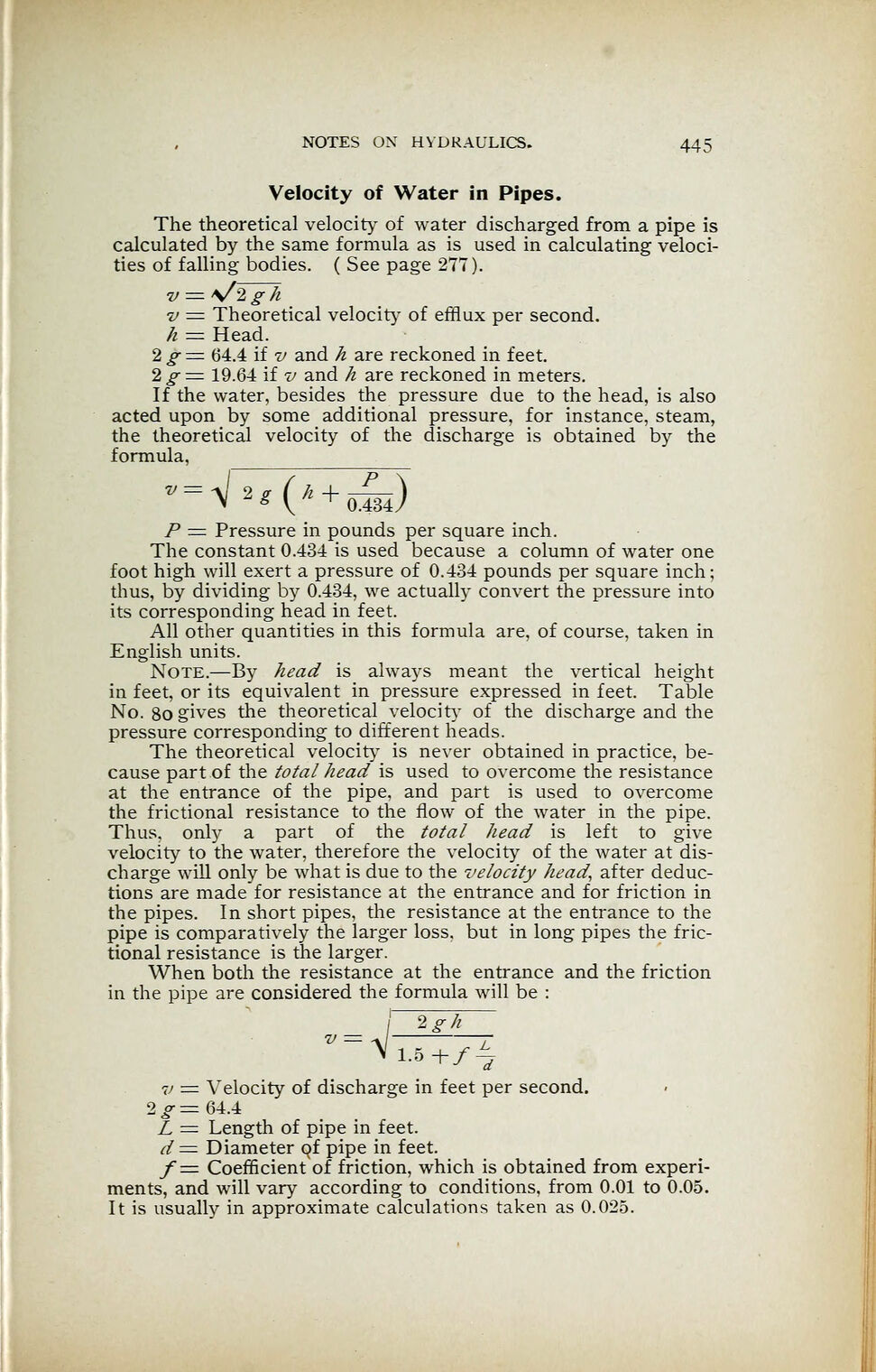
Full resolution (JPEG) - On this page / på denna sida - Notes on Hydraulics - Velocity of water in pipes

<< prev. page << föreg. sida << >> nästa sida >> next page >>
Below is the raw OCR text
from the above scanned image.
Do you see an error? Proofread the page now!
Här nedan syns maskintolkade texten från faksimilbilden ovan.
Ser du något fel? Korrekturläs sidan nu!
This page has never been proofread. / Denna sida har aldrig korrekturlästs.
NOTES ON HYDRAULICS. 445
Velocity of Water in Pipes.
The theoretical velocity of water discharged from a pipe is
calculated by the same formula as is used in calculating veloci-
ties of falling bodies. ( See page 277).
v — \S’2 g h
v = Theoretical velocity of efflux per second.
h = Head.
2 g = 64.4 if v and h are reckoned in feet.
2 g = 19.64 if v and h are reckoned in meters.
If the water, besides the pressure due to the head, is also
acted upon by some additional pressure, for instance, steam,
the theoretical velocity of the discharge is obtained by the
formula,
•H »*(*+«&)
P = Pressure in pounds per square inch.
The constant 0.434 is used because a column of water one
foot high will exert a pressure of 0.434 pounds per square inch;
thus, by dividing by 0.434, we actually convert the pressure into
its corresponding head in feet.
All other quantities in this formula are, of course, taken in
English units.
Note.—By head is always meant the vertical height
in feet, or its equivalent in pressure expressed in feet. Table
No. 80 gives the theoretical velocity of the discharge and the
pressure corresponding to different heads.
The theoretical velocity is never obtained in practice, be-
cause part of the total head is used to overcome the resistance
at the entrance of the pipe, and part is used to overcome
the frictional resistance to the flow of the water in the pipe.
Thus, only a part of the total head is left to give
velocity to the water, therefore the velocity of the water at dis-
charge will only be what is due to the velocity head, after deduc-
tions are made for resistance at the entrance and for friction in
the pipes. In short pipes, the resistance at the entrance to the
pipe is comparatively the larger loss, but in long pipes the fric-
tional resistance is the larger.
When both the resistance at the entrance and the friction
in the pipe are considered the formula will be :
Vt
2gh
+/4
v = Velocity of discharge in feet per second.
2 g = 64.4
L = Length of pipe in feet.
d = Diameter of pipe in feet.
f— Coefficient of friction, which is obtained from experi-
ments, and will vary according to conditions, from 0.01 to 0.05.
It is usually in approximate calculations taken as 0.025.
<< prev. page << föreg. sida << >> nästa sida >> next page >>